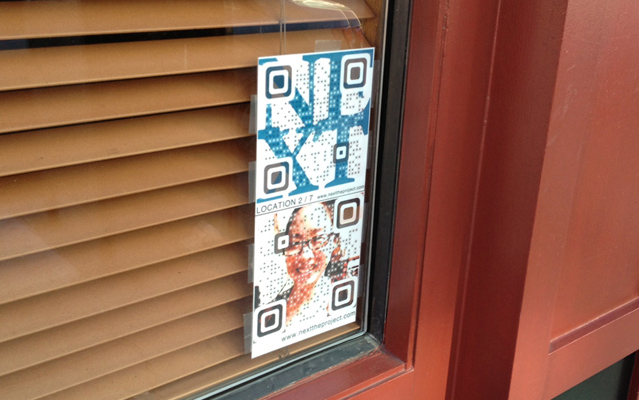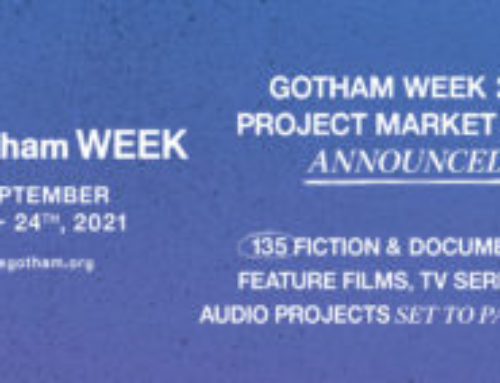by Laura Brueckner
Theatre Bay Area Magazine
Welcome to the first installment of Bread and Circuits, a series looking at meaningful intersections of theatre and technology in the Bay Area and beyond.
Why theatre and technology? Sure, much of the strange power of theatre comes from the fact that it needs no technology to be effective. At the same time, and especially in tech-heavy urban areas, innovations in technological fields like digital communication continue to influence how we see and speak to one another (or don’t), how and what we remember, and how we tell stories. Technology is constantly shaping and reshaping who we are on very fundamental levels.
For many artists, this turn of events is thrilling, because it affords both new ways of making art and new things to make art about. The people who develop new apps and social media platforms study pretty much the same basic questions that theatre folks do: how do humans make meaning? How do we build relationships? How do we tell stories? In the case of digital communications technologies, these questions help developers design new ways for people to share content, each of which requires the user to learn new rules, to think and communicate in a new way (content works differently on Facebook than on Tumblr or Pinterest, for instance). And each of these new ways of communicating leads to not only new ideas, but brand-spanking-new styles of interpersonal relationship that literally didn’t exist before.
Still, in technology as in so much else, the unknown freaks us out as much as it intrigues us. One cultural anxiety indicator is the huge number of movies with this basic plot line: “someone built a powerful computer and then something unforeseen happened and then the computer took over.” (I love these movies, by the way. “2001,” “War Games,” bring ‘em on.) We know that we don’t know what we’re creating, but we’re too excited to stop.
“Next,” a theatre-based digital media experiment in the South of Market area of San Francisco, uses a range of communications technologies to exploit this tension. Created by the formidable team of Desdemona Chiang, Christopher Chen and Cindy Im, “Next” defies easy categorization. The project website calls it a “site-specific installation” that is “part theatre, part tour, part game,” where would-be audience members must physically pursue the story from location to location. For those who follow the route laid out on the website’s map, “Next” traces the evolving relationship between characters who meet because one of them discovers a lost mobile phone. All is not as it seems, of course, and what starts as a simple text conversation soon becomes a surprisingly nuanced exploration of intimacy, memory and disappearance.
Let’s get one thing out of the way: “Next” uses no live actors. “I would feel better about calling it a theatre piece if it had live actors,” says director Desdemona Chiang, who received an Artist/Investigator grant from Triangle Lab to produce the project. (Read her Triangle Lab interview here.) However, she says, “[m]ost of the process was a lot like straightforward directing and playwrighting…deciding what the action was, what the next event in the story was, how characters change, etc.” “Next,” Chiang says, is just the first step toward larger project she hopes to stage, one that would definitely weave live performances into the story, putting its corporeal and digital aspects in conversation.
Instead of waiting for a curtain to rise, people who want to experience “Next” begin at the project website, which features a large QR code. Scanning the code with a smart phone causes the phone’s browser to play a brief video prologue introducing a character (played by Cindy Im); it then shows the physical location of the next QR code. Would-be audience members must then head to that location and scan the code posted there, and so on. When scanned, each QR code —there are seven in all—unlocks the next piece of the story and reveals the location of the next code.
Chiang and Chen agree that the medium is, in many ways, the message. “I’ve been really obsessed with how mobile technology has pretty much transformed how we communicate and how we engage with our content, says Chiang. “I wanted to do a piece where the phone was actually the conduit and point of engagement for the art itself. So if we’re going tell a story through cell phones, then we have to write a story about cell phones.” Playwright Chris Chen was inspired by “the ghostlike qualities of iPhone/Facebook/social network [applications]…i.e., of following the ghost of someone who you never touch.” Taken together, these impulses have created a story told entirely through audio and video clips, maps and simulated text messaging conversations between the characters—a story that the audience must pursue, taking the same routes and stopping at the same locations the characters do. All the while, in the story, one character pursues the other through the streets of San Francisco, their interactions highlighting both digital media’s startlingly effective moments of connection and its frustrating limitations on connection (anonymity, opaqueness, time lag).
That’s why “Next” is so interesting: it succeeds so well in asking urgent questions about human connection using the technologies we employ every day to make that connection, and derives a great deal of dramatic energy from highly nuanced meanings not only native to but possible only in those digital contexts.
At one point in the story, for example, a conflict arises between two characters, Alice and Jo, conversing by text message on smart phones. Throughout the piece, Jo is referred to as “you,” e.g., the audience members, looking at their phones, are addressed as though they were the Jo character in the play, and they watch this tense conversation unfold on their own phones as though they were the ones participating in it. Jo begins to type a harsh reply, then changes his mind and erases it, then begin another harsh reply, then changes his mind again and erases it, then types a third reply, a gentler one, which he actually sends. Seeing the process of hesitation and decision so exposed, by way of words not used and pauses in typing, results in a complicated intimacy with the character—one successfully infused with that familiar mix of immediacy and isolation peculiar to digital communication.
Technology also influenced the dramaturgy of the piece. Chiang said that one of the main questions the team had to consider was how to motivate audience members to actually walk from one code location to the next, so each code had to unlock enough new information to create investment and suspense without giving too much away. They also had to decide which format would convey each new piece of information best: would a certain reveal work better in audio or video? Text? “I started thinking more about video games,” she said. “Because this project has the audience moving around and sort of working on their own schedule, I realized that it was a lot like watching kids play Halo. Like—what makes a kid keep playing the game, or what makes them press this button or that button?”
Chen found the challenge refreshing. “It was different in that it involved thinking in a new way about how the audience was receiving it,” he says. “For example, when one character—who is a mysterious person texting “you,” the protagonist—is saying cryptic things, I’m taking into account the fact that you are standing on a street corner reading this, you are in front of this or that store, you’ve already received this that and the other piece of information, and you have also received different pieces of nontextual information like pictures on your iPhone. Being in a location where there is a trace memory (which is the conceit of the story), and engaging with a device (iPhone) that has the potential to carry around your memories, brings different layers to the writing in ways that sitting in a theatre doesn’t.”
There are some drawbacks to working in new territory, too. There isn’t much ready-made theatrical language for what the project actually does, much less how it does it. Archiving is an issue too. “The funny thing is, I have no idea how to put this in my portfolio,” says Chiang. “Even if I had screenshots, they’re just screenshots of someone’s phone, which is not dramatically compelling. But isn’t it fascinating? That it’s drama without bodies? Or even the image of bodies?”
Yes, yes it is.
“Next” will be available to audiences through January 31, 2014.



